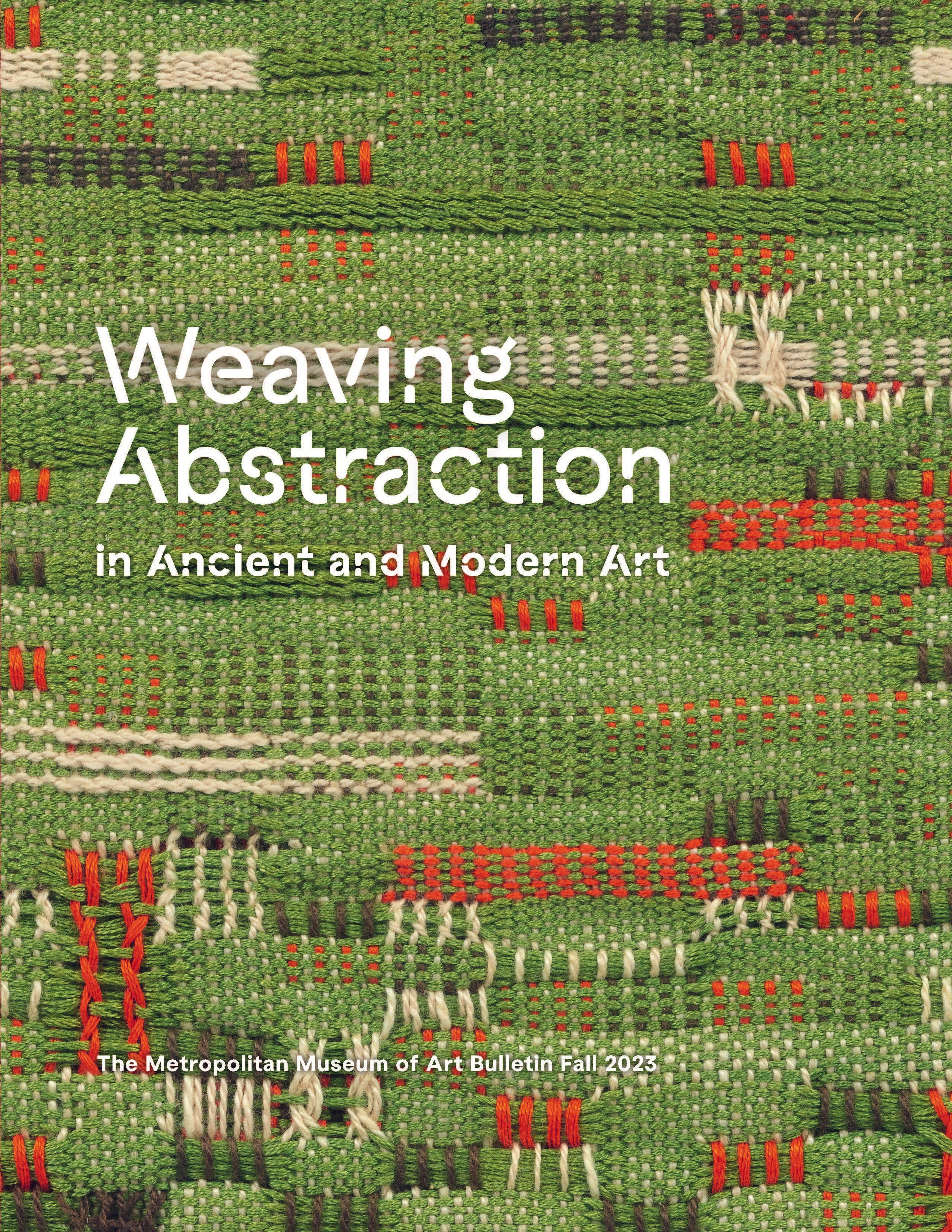Headband with ornamental tassels
Originally part of a single object linked by the thin cord, these textile fragments were probably worn with the cord wrapped around the head and the tassels hanging on each side. During the late Nasca period, on the south coast of Peru, there was a florescence of weaving technology. The tassels reveal both the complexity of Nasca weavings and how multiple techniques could be combined in a single work. In this example, an inner blue textile was woven under the upper red textile. (This is most easily seen at the frayed bottom.) In order to make the design, the colored (blue) threads from the bottom were moved to the top. This exchange of colors was repeated along the tassels’ vertical axis. The textile was originally woven with duplicate images at the two ends. The finished fabric was folded in the middle to form the bottom of the tassel, and the sides were sewn closed. A second textile woven separately with an image that seems to illustrate a human form in a horizontal position was attached to the top. The long cord was woven as a third piece and attached to the two tassel tops. Although the design appears to be purely geometrical, closer analysis of tassels of this type has revealed faces and figures (Frame, 1996).
References and Further Reading
Bjerregaard, Lena. Precolumbian Textiles in the Ethnological Museum in Berlin. Lincoln, NB: Zen Books, 2017, p. 82.
D’Harcourt, Raoul. Textiles of Ancient Peru and Their Techniques. Seattle, WA: University of Washington Press, 1962, pp. 81-82.
Frame, Mary. “Late Nasca Tassels.” In Andean Art at Dumbarton Oaks. edited by Elizabeth Hill Boone, Vol. 2, pp. 366-369. Washington, DC: Dumbarton Oaks Research Library and Collection, 1996.
Stone-Miller, Rebecca. To Weave for the Sun: Andean Textiles in the Museum of Fine Arts, Boston. Boston, MA: The Museum of Fine Arts. Boston, 1992, pp. 92-93.
References and Further Reading
Bjerregaard, Lena. Precolumbian Textiles in the Ethnological Museum in Berlin. Lincoln, NB: Zen Books, 2017, p. 82.
D’Harcourt, Raoul. Textiles of Ancient Peru and Their Techniques. Seattle, WA: University of Washington Press, 1962, pp. 81-82.
Frame, Mary. “Late Nasca Tassels.” In Andean Art at Dumbarton Oaks. edited by Elizabeth Hill Boone, Vol. 2, pp. 366-369. Washington, DC: Dumbarton Oaks Research Library and Collection, 1996.
Stone-Miller, Rebecca. To Weave for the Sun: Andean Textiles in the Museum of Fine Arts, Boston. Boston, MA: The Museum of Fine Arts. Boston, 1992, pp. 92-93.
Artwork Details
- Title:Headband with ornamental tassels
- Artist:Nasca artist
- Date:6th–8th century
- Geography:Peru
- Culture:Nasca
- Medium:Camelid hair
- Dimensions:H x W: 8 1/4 x 12in. (21 x 30.5cm)
- Classification:Textiles-Woven
- Credit Line:Bequest of Jane Costello Goldberg, from the Collection of Arnold I. Goldberg, 1986
- Object Number:1987.394.692
- Curatorial Department: The Michael C. Rockefeller Wing
More Artwork
Research Resources
The Met provides unparalleled resources for research and welcomes an international community of students and scholars. The Met's Open Access API is where creators and researchers can connect to the The Met collection. Open Access data and public domain images are available for unrestricted commercial and noncommercial use without permission or fee.
To request images under copyright and other restrictions, please use this Image Request form.
Feedback
We continue to research and examine historical and cultural context for objects in The Met collection. If you have comments or questions about this object record, please contact us using the form below. The Museum looks forward to receiving your comments.
